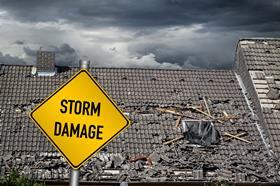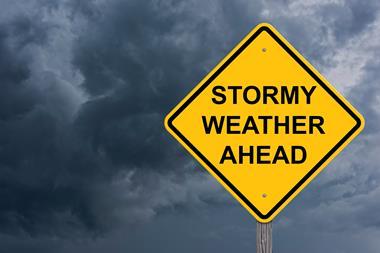’The resilience and effectiveness of the Flood Re scheme were rigorously tested,’ says chief executive
Flood Re’s gross claims surged in the last 12 months after several storms battered the UK.

In a trading update, the firm revealed that it saw claims worth £241.6m during the year ending 31 March 2024, up from £45.9m during the previous financial year.
It came as a result of 30% of all claims since Flood Re’s inception being received in 2023/24, with storms Babet, Ciaran and Henk all causing torrential weather during the period.
In turn, around one-third of claims submitted to Flood Re included Build Back Better (BBB) provisions.
BBB offers people the opportunity to install property flood resilience measures up to the value of £10,000 when repairing their properties after a flood.
The number of policies ceded to the scheme increased by 9% to 288,567.
Andy Bord, outgoing chief executive of Flood Re, said: “This year, the resilience and effectiveness of the Flood Re scheme were rigorously tested by severe storms Babet, Ciaran and Henk, marking the most significant flood events since our inception in 2016.
“We met these challenges head-on and delivered for those most at risk.”
Growth
The year also saw Flood Re invest £900m into liquid assets and maintain a 238% operational capital ratio, with a profit before tax of £23.8m.
Read: UK faces urgent need for flood education as storms increase in frequency
Read: Home insurance premiums rise after severe winter for weather damage
Explore more market-related content here or discover other news stories here
There was also a 2% growth in households benefiting from Flood Re cover since April 2016, bringing the total to 560,446.
“During my tenure, we’ve achieved significant milestones, such as enabling over 550,000 households to access affordable home insurance and launching the world-first BBB initiative,” Bord said.
“However, it’s time for all stakeholders to work harder to improve household resilience - including full insurer support for BBB, provide better consumer information about flood risk and ensure a smooth transition as Flood Re exits the market in 2039.
“I am confident that Flood Re will continue to thrive and play a crucial role in managing flood risks and supporting affected communities.”

His career began in 2019, when he joined a local north London newspaper after graduating from the University of Sheffield with a first-class honours degree in journalism.
He took up the position of deputy news editor at Insurance Times in March 2023, before being promoted to his current role in May 2024.View full Profile
















































No comments yet